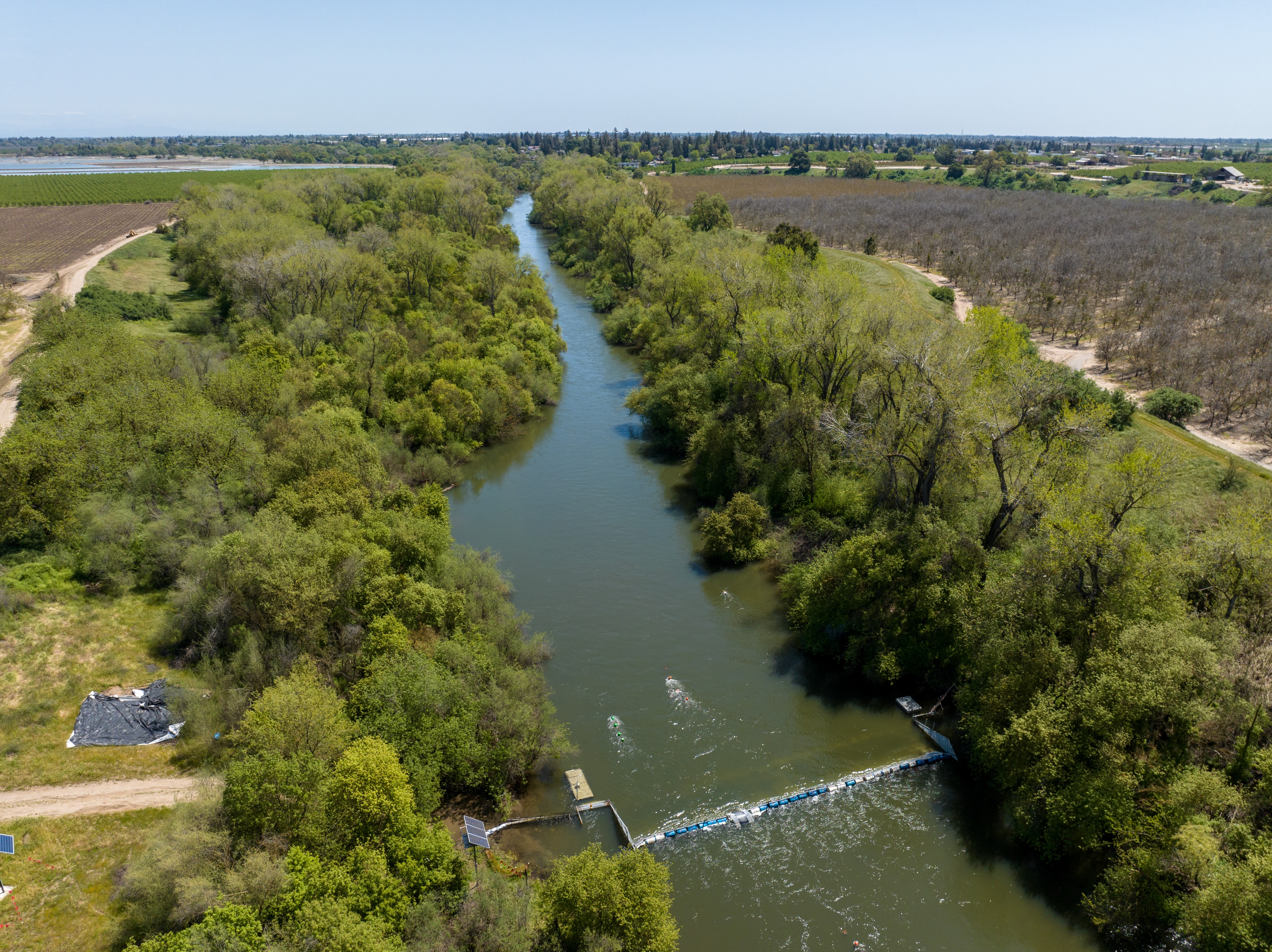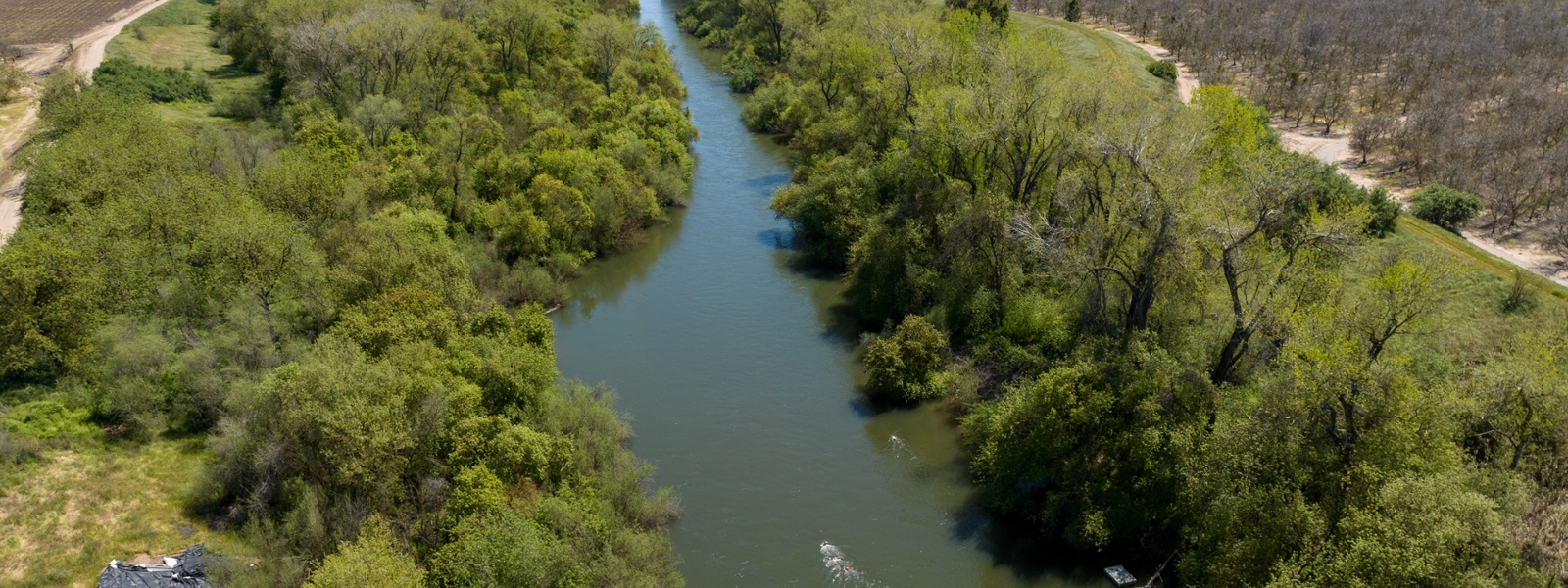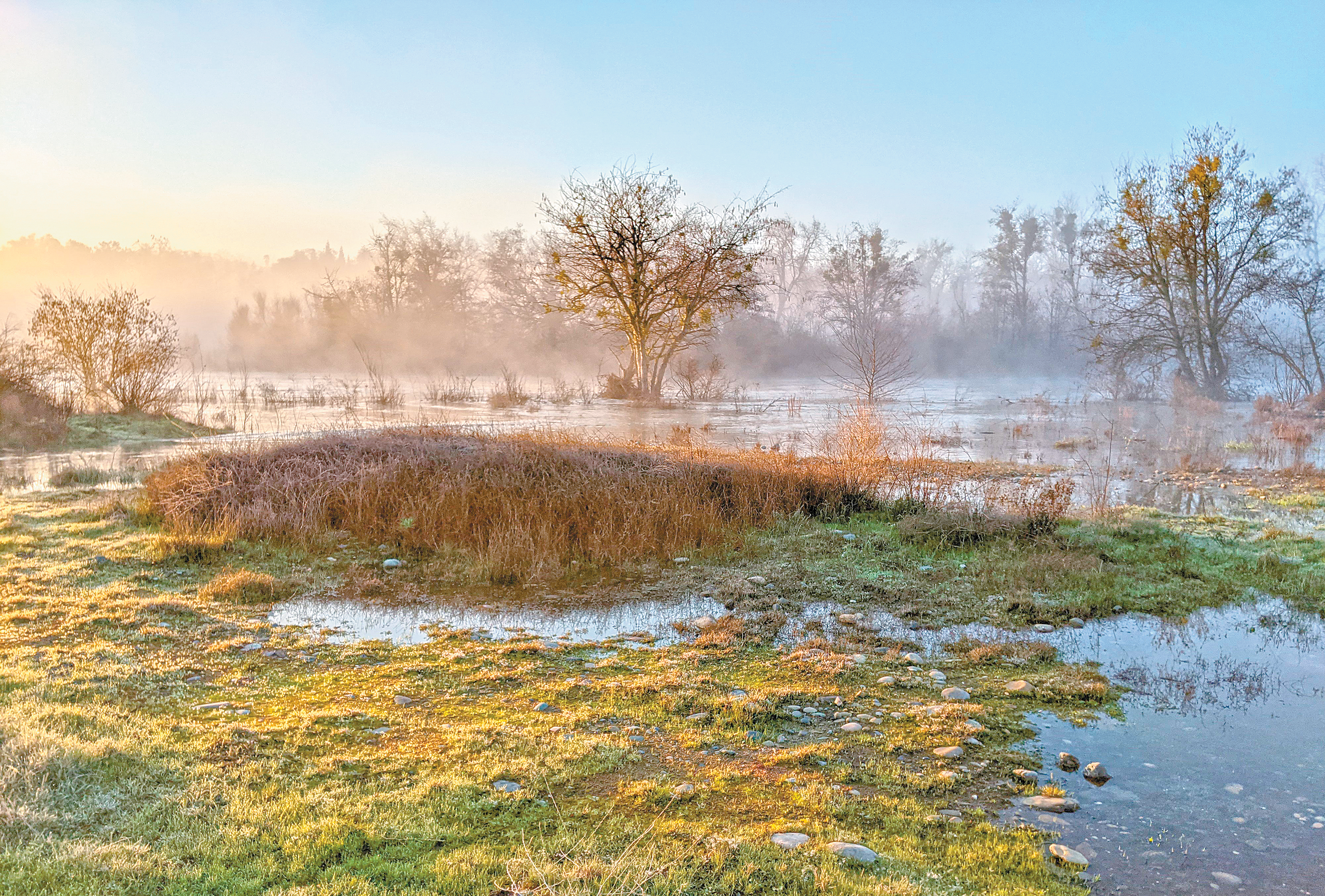State flows plan advances in, out of court

Near Riverbank, this aerial view shows a fish monitoring station on the Stanislaus River, one of three San Joaquin River tributaries subject to a plan that redirects flows of 30% to 50% for fish as part of the state’s water quality control update for the San Francisco Bay/Sacramento–San Joaquin Delta.
Photo/California Department of Water Resources


Photo/Modesto Irrigation District
By Christine Souza
Central Valley water districts subject to a state plan that diverts flows from the San Joaquin River tributaries downstream for fish are working to achieve a more holistic approach for the fishery through voluntary agreements, while also challenging the state’s flows-only approach in court.
Central to the issue is a plan adopted in 2018 by the California State Water Resources Control Board that requires affected water users to leave unimpaired flows of 30% to 50% in three San Joaquin tributaries—the Stanislaus, Tuolumne and Merced rivers. The work is the first phase of the state’s water quality control plan update for the San Francisco Bay/Sacramento–San Joaquin Delta, known as the Bay-Delta plan.
Districts, farmers and residents of the affected region have protested the plan, saying it would do little to restore salmon and other fish populations while cutting water supplies to the northern San Joaquin Valley.
“Notwithstanding our commitment and efforts in this collaborative process, MID continues to defend our water rights against the state water board’s regulatory overreach,” said Melissa Williams, public affairs manager for Modesto Irrigation District, which jointly operates Don Pedro Reservoir on the Tuolumne River with Turlock Irrigation District.
The districts and their partner on the river, the San Francisco Public Utilities District, signed a memorandum of understanding last November to work with the state to advance a voluntary agreement for the Tuolumne River.
Williams said MID and related partners have participated in numerous meetings with state staff. “The comprehensive nature of the voluntary agreement greatly outweighs the devastating and one-sided, flow-only approach,” she said.
Michael Cooke, director of regulatory affairs at TID, spoke before the state water board during a meeting last week. He said local water districts look forward to partnering with resource agencies to develop a comprehensive approach to improving conditions for fish that includes flow, habitat, funding, science, monitoring and adaptive management.
Williams said voluntary agreements for the Tuolumne River and the Sacramento River basin—Phase 2 of the Bay-Delta plan—are expected to be presented to the state water board in 2024 for consideration and adoption.
As water districts, government agencies and other interests continue to negotiate voluntary agreements, oral arguments in about a dozen lawsuits challenging the state’s plan were heard in Sacramento County Superior Court in late August.
Tina Cannon Leahy, staff counsel with the state water board’s Office of Chief Counsel, discussed the pending litigation during the water board meeting.
She said an entire week of oral arguments was presented in state water board cases on Porter-Cologne Water Quality Control Act claims. In addition, she said there will be four days of court arguments on California Environmental Quality Act claims this month. That will be followed by two days of arguments on other legal matters, including claims on waste and unreasonable use and public trust, she said.
The cases, which challenge different aspects of the state’s Bay-Delta plan for the San Joaquin River tributaries, include a lawsuit filed by the California Farm Bureau.
Chris Scheuring, senior counsel for the California Farm Bureau, said the suit, scheduled to be heard Sept. 25 in Sacramento County Superior Court, challenges adoption of the plan and claims the state’s environmental review document underestimates the harm the plan would cause to Central Valley agriculture.
“The big plan is to put in place this water quality control plan, so a water quality overlay onto a major chunk of the San Joaquin River system for those three rivers that would purport to constrain water rights in the name of water quality, which is legally not a precise fit,” Scheuring said, adding that water quality law in the past has addressed pollution issues.
“This is important statewide because this water quality control planning process, if validated, is probably going to move to other river systems, so it’s coming to a watershed near you,” Scheuring added.
Affected water right holders, he said, are aware that working with the state and other interests is the way to solve these issues.
“We’ve always said that the problem is much more multifarious than just throwing water at it by a regulatory process in which the state agency says get the water back in the river,” he said. “Farmers are just as interested as anybody else, and probably more so, in solving fisheries conflicts.”
As litigation continues, the state water board took its first action on the Bay-Delta plan in more than five years last week, adopting biological goals for flow objectives to support salmon in the San Joaquin River tributaries.
Stephen Louie of the state water board’s division of water rights, said the biological goals are for salmon abundance, productivity, diversity and population spatial extent, distribution and structure.
He said the goals are not regulatory but serve as metrics for monitoring and assessment. Once established, the board may use the goals to measure the effectiveness of the flow objectives and other aspects of the Bay-Delta plan.
Thomas Berliner, an attorney representing the Merced Irrigation District, addressed the state water board last week, encouraging the board to delay a decision to adopt biological goals.
Berliner noted the board resolution states that addressing water rights is an essential part of the Bay-Delta plan and meeting the biological goals. But he said, “There has not been any water rights proceeding.”
Williams of MID said the district is considering legal options on the board’s approval of biological goals, adding the goals are not consistent with amendments of the Bay-Delta plan or state law.
“Despite the state water board’s disappointing action,” Williams said, “MID remains committed to the voluntary agreement process as we firmly believe it is the best chance to provide balanced, comprehensive solutions to address water quality concerns in the Bay-Delta and its tributaries, including the Tuolumne.”
(Christine Souza is an assistant editor of Ag Alert. She may be contacted at csouza@cfbf.com.)




